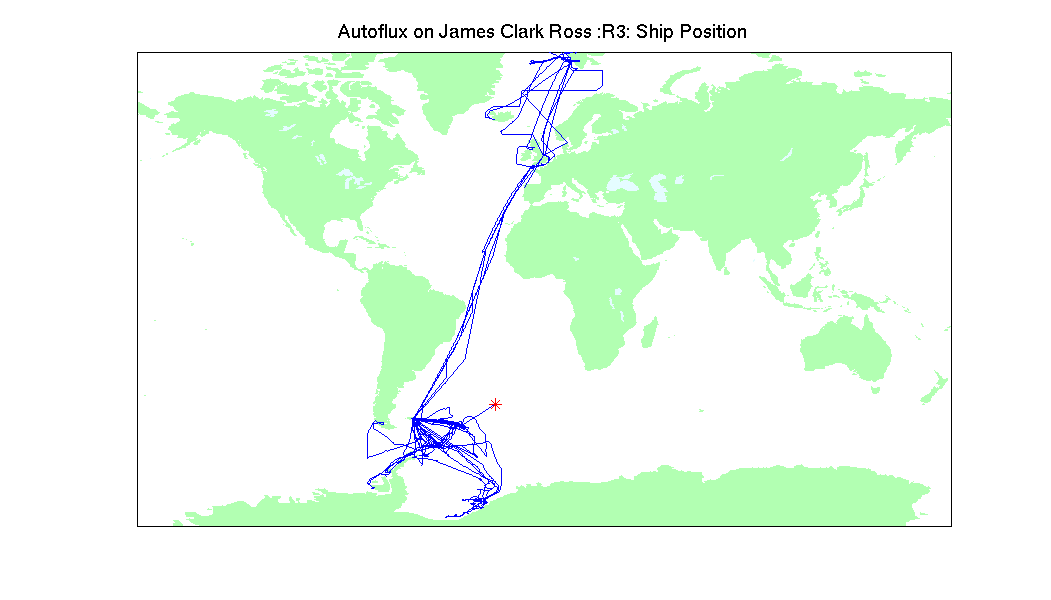Waves, Aerosols and Gas Exchange Study (WAGES)
Contact: Dr Margaret Yelland (NOC) or Dr Ian Brooks (University of Leeds)
The aim of this NERC-funded project was to make direct measurement of the turbulent air-sea fluxes of CO2, sea-spray aerosol, sensible and latent heat and momentum in order to improve the parameterisation of these fluxes in terms of mean meteorological and sea-state variables.
In order to do this we installed a range of instrumentation, including the autonomous air-sea flux system "AutoFlux" and a directional wave radar "WAVEX", on the British Antarctic Survery ship, the RRS James Clark Ross.
The WAGES instruments operated continuously for 3 years, from May 2010 to July 2013, and obtained data in a wide range of conditions particularly the poorly-understood high wind speed regime. The figure shows the cruise track during the 3 year measurement campaign (click on it for a larger image).
DATA FROM THE SHIP were received via an iridium satellite message once per day. These mean meteorological and wave data can be viewed here.
WAGES was a joint project with the University of Leeds. WAGES was preceded by a similar 3-year (2006-2009) continuous flux measurement campaign on the Ocean Weather Ship Polarfront as part of the UK-SOLAS project HiWASE.
In addition to the continuous autonomous measurements, we also had 6 manned cruises on the ship - during these cruises we deployed a novel spar buoy to make measurements of wave breaking and whitecaps under a wide range of conditions (mean wind speeds up to 20 m/s and significant wave heights of 8 m).
To obtain high quality air-sea flux measurements from the ship the effects of flow distortion have to be taken into account. Computational Fluid Dynamics (CFD) modelling was used to study the flow of air over the ships here
We are grateful to the ship's staff and members of BAS AME and IT departments for their help throughout the project.

